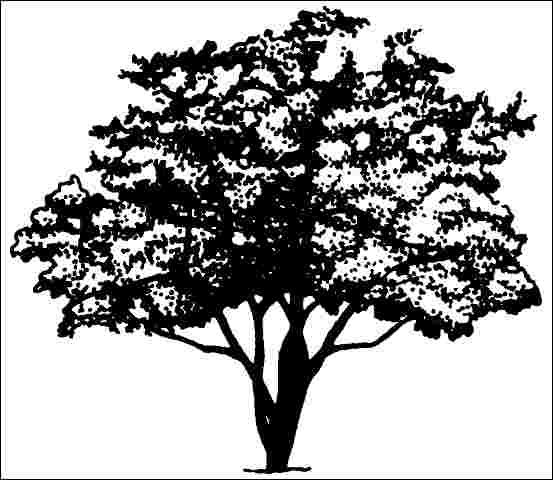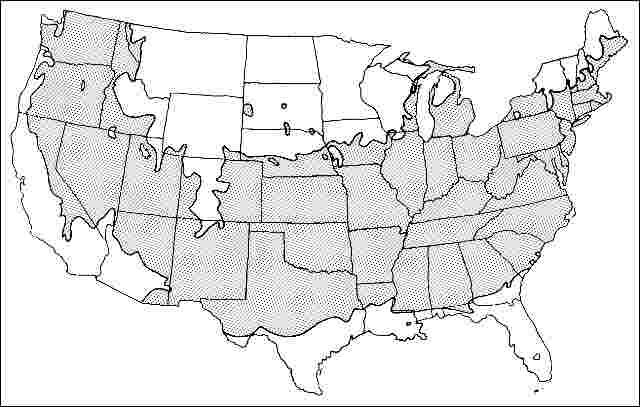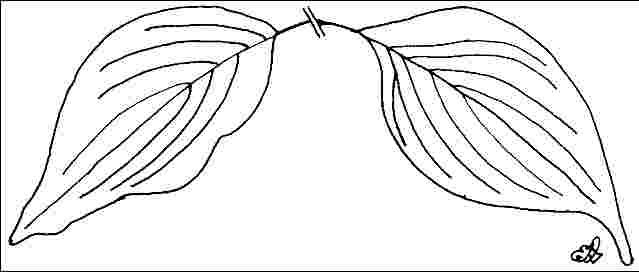Introduction
Cornelian-cherry is a slow-growing, small tree or large shrub preferring sun or partial shade and a well-drained soil. Flowers are produced in northern areas but most of the south lacks the chilling hours required to set flower buds. 'Spring Glow' is the one cultivar which will flower in the south. The growth rate is moderate and young plants transplant easily. Bark is very showy and is often displayed by removing lower foliage. A height of 15 to 25 feet and spread of 12 to 18 feet can be expected, eventually. The yellow flowers produced in very early spring are similar to Forsythia and are followed by red fruit which is edible and partially hidden by the foliage. Green leaves are edged in white and turn red in the fall. Cornelian-cherry responds well to pruning and may be used as a hedge plant.

General Information
Scientific name: Cornus mas
Pronunciation: KOR-nus mass
Common name(s): 'Variegata' cornelian-cherry
Family: Cornaceae
USDA hardiness zones: 5A through 8A (Figure 2)
Origin: not native to North America
Invasive potential: not assessed/incomplete assessment
Uses: deck or patio; hedge; specimen; container or planter

Description
Height: 15 to 25 feet
Spread: 12 to 18 feet
Crown uniformity: symmetrical
Crown shape: round
Crown density: moderate
Growth rate: slow
Texture: medium
Foliage
Leaf arrangement: opposite/subopposite (Figure 3)
Leaf type: simple
Leaf margin: entire
Leaf shape: ovate
Leaf venation: pinnate, bowed
Leaf type and persistence: deciduous
Leaf blade length: 2 to 4 inches
Leaf color: variegated
Fall color: red
Fall characteristic: showy

Flower
Flower color: yellow
Flower characteristics: showy
Fruit
Fruit shape: oval
Fruit length: 0.5 to 1 inch
Fruit covering: fleshy
Fruit color: red
Fruit characteristics: attracts birds; showy; fruit/leaves a litter problem
Trunk and Branches
Trunk/bark/branches: branches droop; showy; typically multi-trunked; thorns
Pruning requirement: little required
Breakage: resistant
Current year twig color: green
Current year twig thickness: medium
Wood specific gravity: unknown
Culture
Light requirement: full sun, partial sun or partial shade
Soil tolerances: sand; loam; clay; acidic; alkaline; well-drained
Drought tolerance: moderate
Aerosol salt tolerance: low
Other
Roots: not a problem
Winter interest: yes
Outstanding tree: yes
Ozone sensitivity: unknown
Verticillium wilt susceptibility: resistant
Pest resistance: resistant to pests/diseases
Use and Management
The once popular species has fallen out of the trade recently but deserves a comeback. It is pest free and grows well on a variety of soil, including clay. Soil should be kept moist with good drainage. Mulching encourages better root growth and moderate drought tolerance. It is not considered highly drought tolerant by any means. It grows in sun to part shade. Use it as a specimen or in a monoculture group planting or shrub border. The fruit makes an excellent tart jelly and also attracts birds. It makes an excellent patio tree in the yard and should be planted more.
Several cultivars are listed but may not be readily available: 'Alba'—white fruit; 'Aureo-Elegantissima'—leaves bordered in yellow, green and pink; 'Elegantissima'—leaves yellow, green and pink; 'Flava'—yellow fruits; 'Fructu Violaceo'—purple fruits; 'Macrocarpa'—larger fruits; 'Nana'—dwarf, three feet tall, 'Variegata'—leaves with white variegations; 'Xanthocarpa'—yellow fruit. One of the best for the southern United States is 'Spring Glow' which has a low chilling requirement and beautiful flowers, handsome, leathery foliage which looks good until frost. Cornus officinalis would be a better choice for the south if you can find it.
Pests
Several borers will attack dogwood. Try to keep the trees healthy with regular fertilization. Indications of borer problems are holes in the trunk, leaves smaller than normal, and dieback of the crown.
Dogwood club gall midge causes galls at the branch tips. The leaves on affected branch tips may be distorted and the branch may fail to form a flower bud. Prune out the galls as soon as they are seen.
Leaf miners cause brown blister-like mines on the undersides of leaves. The adult leaf miner skeletonizes the leaves.
Scales can build up to large numbers before being detected. Horticultural oil will help control overwintering stages.
Aphids may be controlled by spraying them with a strong stream of water from the garden hose.
Diseases
Most of the diseases listed are seen most often on Cornus florida. However other dogwoods are susceptible to the diseases listed.
Early symptoms of dogwood canker are smaller and paler leaves. Leaves on infected branches are red earlier in the fall. At first the symptoms appear only on the infected side of the tree but become more general as the canker enlarges. There is no chemical control for the disease. Avoid trunk wounds during and after planting.
Crown canker is associated with wet soils and can be controlled with appropriate fungicides.
Flower and leaf blight caused by Botrytis cinerea attacks fading bracts, especially during wet weather. Infected flower parts fall on the leaves spreading the infection.
A large number of leaf spots attack dogwood. Clean up and dispose of infected leaves.
Powdery mildew covers the leaves with a fine white coating.
Leaf scorch occurs during hot, dry, windy weather. This condition looks like a disease. Scorch symptoms are drying and browning of the leaf margins, or, in more serious cases, drying and browning of the interveinal area.